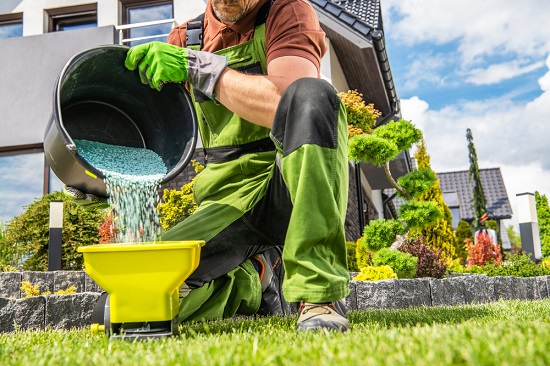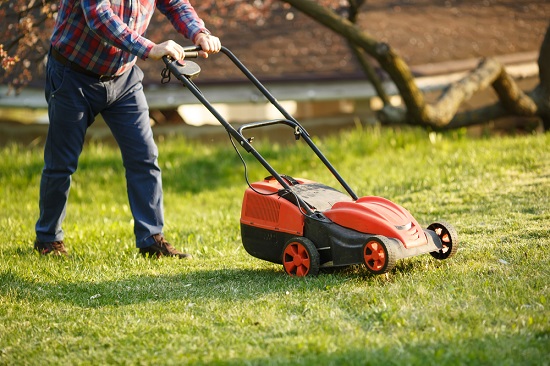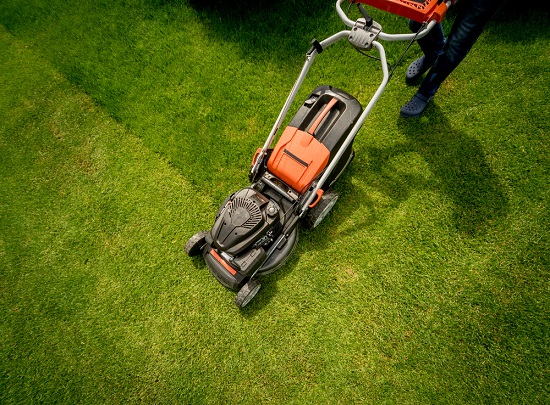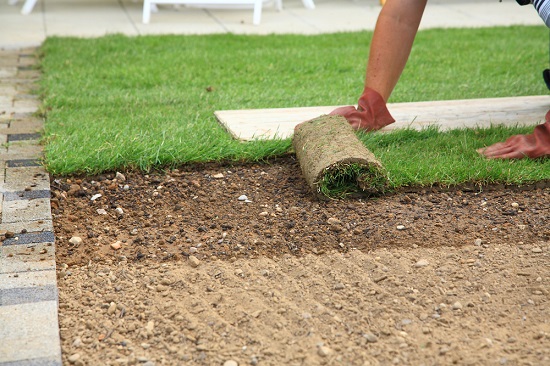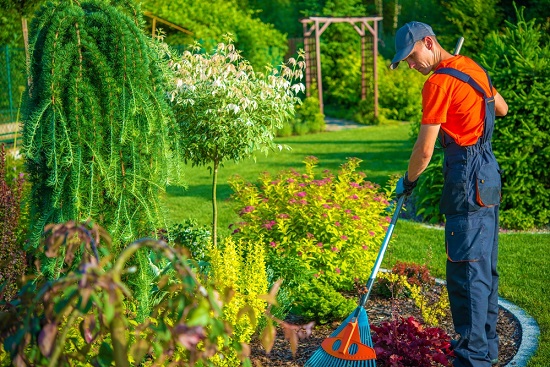
When it comes to landscaping, we all want beautiful, healthy carpets of lush green grass, but did you know that keeping it healthy also goes a long way in keeping your weeds under control? Healthy lawns naturally withstand weeds when regular landscaping maintenance is performed. Here are a few tips to get that perfect turf!
Landscaping Tips For Beautiful Turf
Weed Often
Weeds can be a pain and they grow rather quickly. They tend to take over areas that are bare or where the grass is sparse. The best way to control them is to eliminate weeds with a broadleaf herbicide product, or even just yanking them up by hand. Many weeds are not rooted strongly and are quite easy to just pull up. If you find that the weeds have rooted strongly and are tough to get up, then you can try herbicides in granular form. Do this when you know the grass will be wet so that the granules will adhere to the leaves on the weeds.
Properly Feed Your Lawn
Part of any good landscaping in Conway SC is to feed your lawn in order to keep it beautiful and healthy. Doing this will ensure that your grass stays thick and lush, and that alone will help choke the weeds out. If you live up north, feeding in the spring and fall months works well. But if you’re in the south where it’s much warmer and more humid, you should aim to feed the lawn during the spring and summer months. Keep in mind, however, that you should not attempt to feed the lawn during dormancy, such as a drought. The grass won’t be able to take in the nutrients. The product’s labeling will guide you, so follow the instructions carefully.
Make Your Mowing More Efficient
Do yourself a favor and keep the blades in your mower sharpened. If it gets dull, the grass tends to be torn, rather than actually clipped. This will cause disease to grow on the broken and torn edges of the grass, as well as make the yard look brown and unhealthy. Aim to have the blades of your mower sharpened once a year unless you have Bermuda grass or some other thick turf. During the summer’s extreme heat, it’s better to mow at a higher level. This is to keep the grass blades a bit taller, which will cast a bit of natural shade over the roots, discouraging weed growth. Keep the mower blades at about 3 inches, which is pretty high. Never cut more than a third of the blades of grass.
Be Smart With Watering
Most lawns need an inch or so of water each week. Often, you can get this with rain alone, but keep your eye on the rainfall amounts so you will know if you need to augment it with a sprinkler system in order to keep your lawn watered and looking healthy. If you can, water in the mornings early. This will ensure that the sun will dry the moisture off the blades of grass, which will prevent disease. Watering a little less often, but more deeply will really help your grass root deeper into the ground, making it far more able to stand up during a drought period
 What You Should Know About Weed Control
What You Should Know About Weed Control
If you’ve lived in a home with a lawn, then you already know how weed control has to become a priority. Weeds can pop up so fast and ruin the look of even the most beautiful lawns. The key to a well-manicured lawn among other things is to keep the weeds under control. To put it simply, the definition of a weed is any plant that is growing in places you don’t want them. Making sure your lawn is weed-free is nearly an impossible task due to how quickly the weed seeds fall to the ground and germinate. Controlling weeds can be tough but the main thing to keep in mind is that you must stay one step ahead of the weed population. All it takes is a week or two of neglect and your garden or lawn can easily become overrun with unwanted weeds.
Some Basics On Weed Control
When you think of a weed, just think of any other plant. Weeds require certain kinds of nutrients like other plants, sun and water, etc. The main difference is that weeds can easily “steal” the nutrients from the grass and other plants, causing an unhealthy lawn. So, the best lawn care tip when it comes to weed control is to have great lawn care. If your focus is on keeping your lawn nice and healthy, the weeds will become less of an issue. In order to be at their best, lawns all need a few basic things:
- Water.
- The right nutrients.
- The proper amount of aeration.
- Fertilizer
The more healthy your lawn becomes, the more unhealthy of an environment it becomes for weeds. It’s that simple. Healthy lawns can overtake weeds and fight them off, along with certain pests as well. But what do you do once you spot weeds creeping in?
It’s a process to properly control weeds, but you’ll find that once you get an initial handle on it, maintaining it is not so hard or time-consuming. If you can spot them as they are first coming up, then just taking a few minutes to pull them up out of the ground by the root is your first line of defense. This is easy to do and staying on top of it will assure that you don’t have to spend all weekend trying to kill weeds that could be controlled a little here and there.
Some weeds, like daisies, are hearty and will stand up to a close mowing job, yet still be able to flower and flourish. Weeds like this can cover large areas rather quickly due to the fact that they drop seeds. The good news here is that a good insecticide weed killer will get rid of them with just one use.
Perennial weeds like dandelions can also stand up to mowing the lawn very closely. They will produce a yellow flower and good-sized rosettes, so the best way to keep them under control is to use salt. Place the salt in the middle of the flower and let it sit overnight. The next day, it will have killed the weed and then all you need to do is pull them up by their root.
Use chemicals carefully when planning your weed control. Most chemicals are formulated specifically for killing weeds but not hurting your grass. Chemicals can also be used for weed control in flowerbeds, but it’s best if you let your flowering plants mature to at least 4-6 inches before using chemical applications.
As a last resort, herbicides can be used to kill weeds, but you have to be really careful to have the right conditions outside. Even a small breeze can carry herbicides to your flowerbeds, causing them to die. If you do use herbicides, aim the nozzle close to the ground and make sure you are only spraying the weed, and nothing else around it.
The use of herbicides should be used as a last resort. When applying any type of chemical or herbicides, make sure you have the correct weather conditions, as the slightest breeze can carry the chemical onto your plants and flowers and kill them. When spraying weeds, the nozzle should be kept close to the ground and sprayed directly onto the weed itself.
Beautiful lawns do require a little effort to maintain, but if you understand the basics, it’s not bad at all and the results are totally worth it! Taking a little time out to do weed control is much easier than dealing with a lawn that is overrun with all kinds of weeds.
For more information on weed control or other landscaping issues, call us today at Conway Lawn Care Service! We’ll take the guesswork out of your beautiful lawn and help you spend your summer enjoying your yard with family and friends.
Conway Lawn Care Service
Conway, SC 29526
843-353-2259
http://conwaylawncareservices.com/
